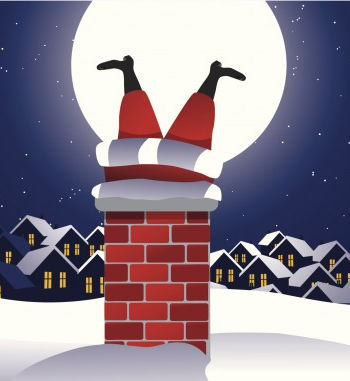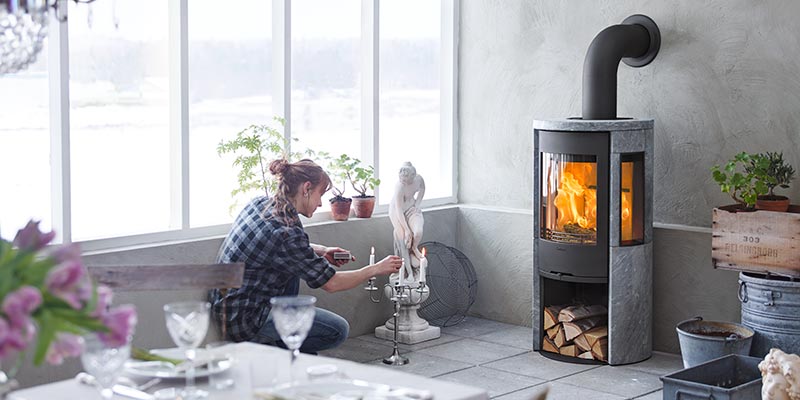Many people will notice that it can sometimes be difficult to light your wood-burning stove in the mornings. We have heard of instances where the stove fills with smoke, which is released into the room often causing breathing difficulties. When lighting your stove in the morning there is a very simple technique which will ensure that the hot gases escape out of the flue into the open air. Before we look at this simple technique, it is worth having a quick recap of the mechanics behind the modern day wood-burning/multifuel stove and exactly how it works.
Constant airflow is the key
In order for any fire to burn one of the key elements is fresh air which encourages the flames and ignites the fuel. If we look at the mechanics in layman’s terms, as the fuel burns within the stove this creates heat which is released into the room while the excess gases are rerouted through the flue and into the atmosphere. The simple way in which these gases are encouraged to escape from the flue revolves around the fact that hot air rises.

As the hot gases rise through the flue and into the atmosphere they leave a vacuum further down the system which is filled with the new air which is drawn through air vents, which can be opened and closed to different degrees. This new air then fuels the fire, creating hot air and hot gases, the hot air being used to heat the room and the hot gases escaping through the flue. This is why many chimney flues will have “chimney hats” to reduce back draw in windy weather conditions.
Warming your flue
Whether a single or double lined flue the industry guidelines suggest that a minimum of 4.5 m is required so that your stove can operate effectively. Traditionally, when igniting your stove in the morning you would place paper then kindling and then finally wood fuel before lighting. However, in order to ensure that your flue is operating at a suitable temperature many stove experts suggest a different method.
If you lay kindling and then paper and light this in the combustion chamber of your stove this will release warm air into the flue. This will create the basis of a more efficient wood-burning system because once you introduce the log fuel into the mix this will create more hot air and hot gases. As the flue has already been “warmed up” these gases will escape through the flue with the vacuum this creates filled by cold air filtered in through the stove air vents. If your flue pipe is “cold” this can reduce the efficiency of the hot air escaping often causing smoke to be released into the room atmosphere.

Simple tips
There are other ways in which you can warm the flue but a light burning of paper and kindling before you add the main fuel should more than suffice. It is interesting to see that with all of the bells and whistles associated with modern day wood-burning and multifuel stoves, the concept remains the same, hot gases rise and the air vents in the stove allow cold air to be “drawn in” and the fuel combustion process continues.

